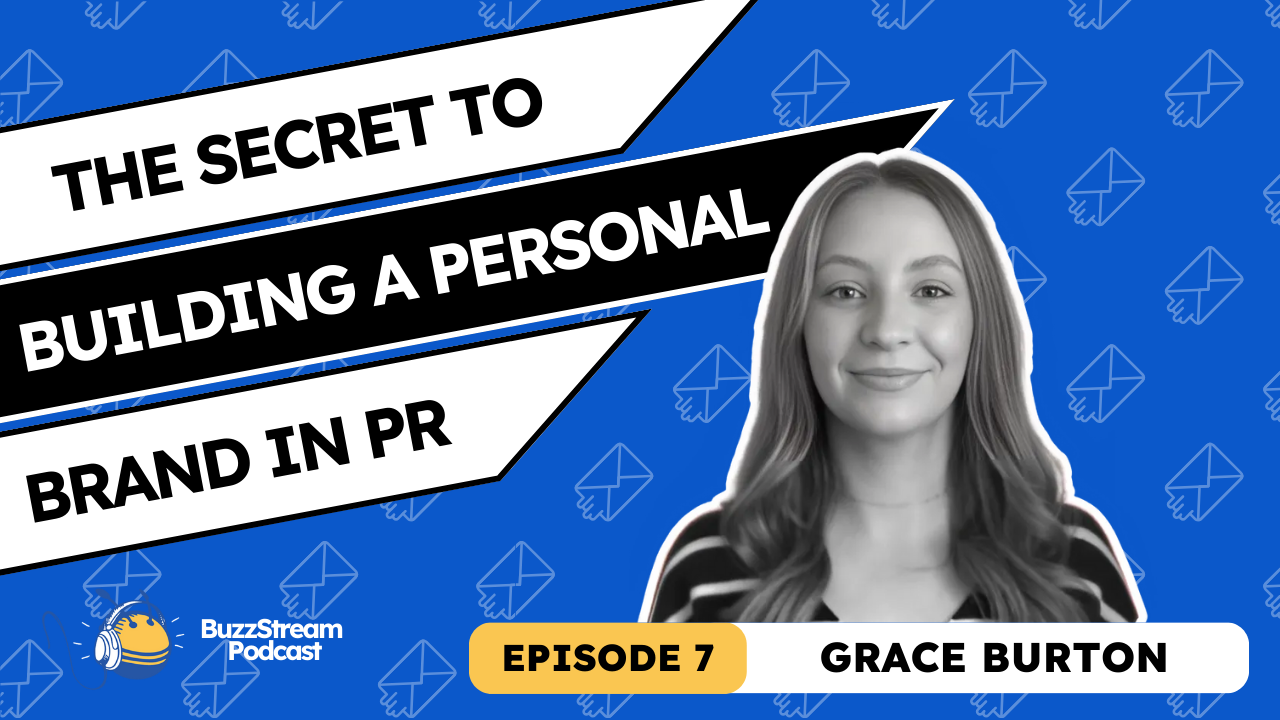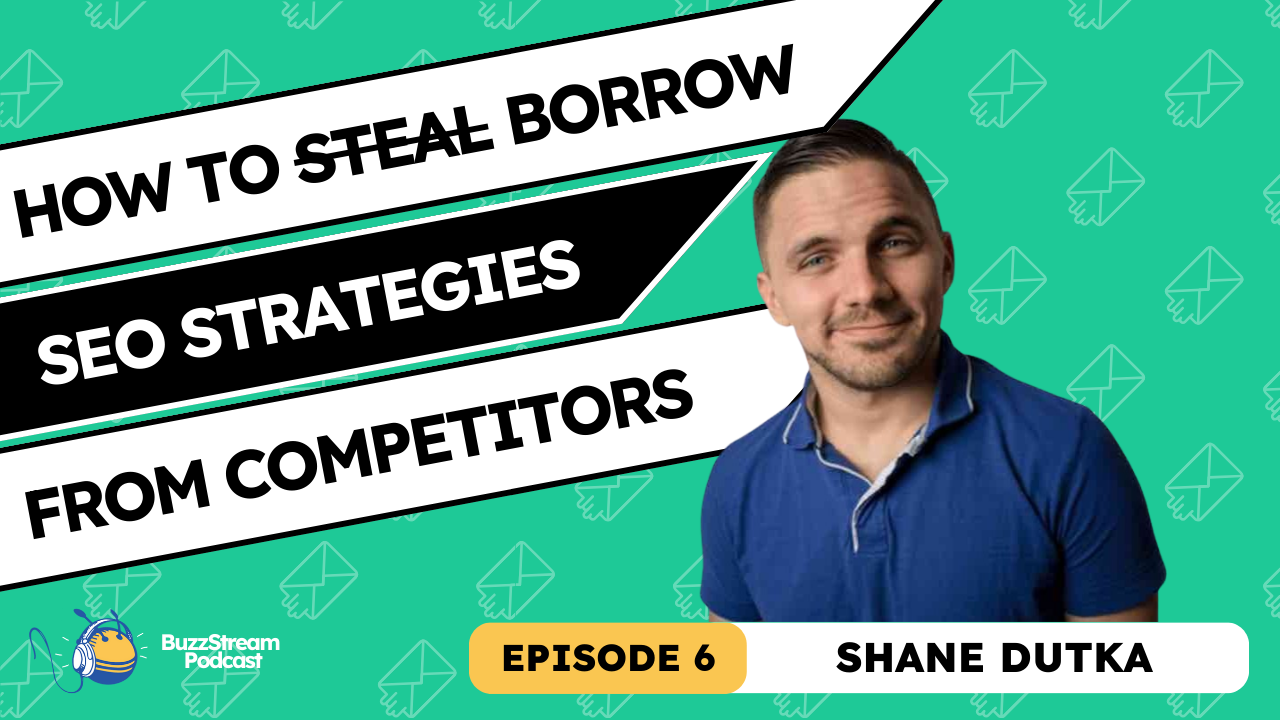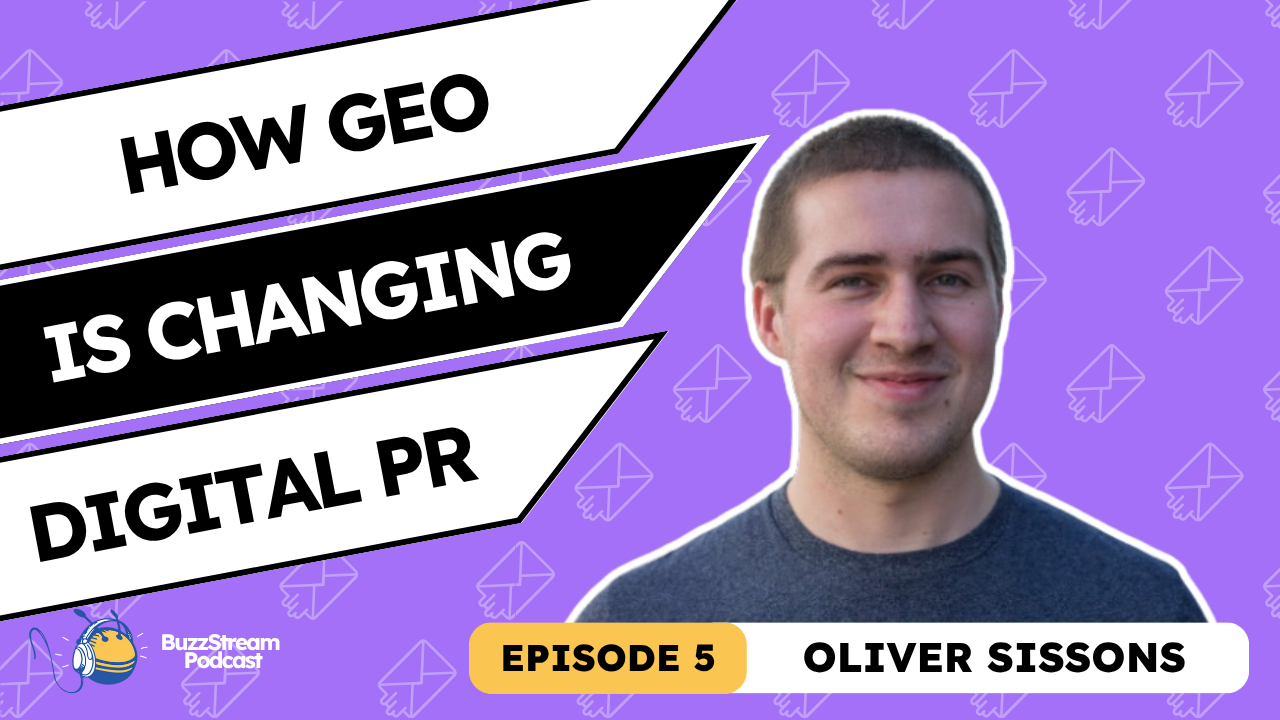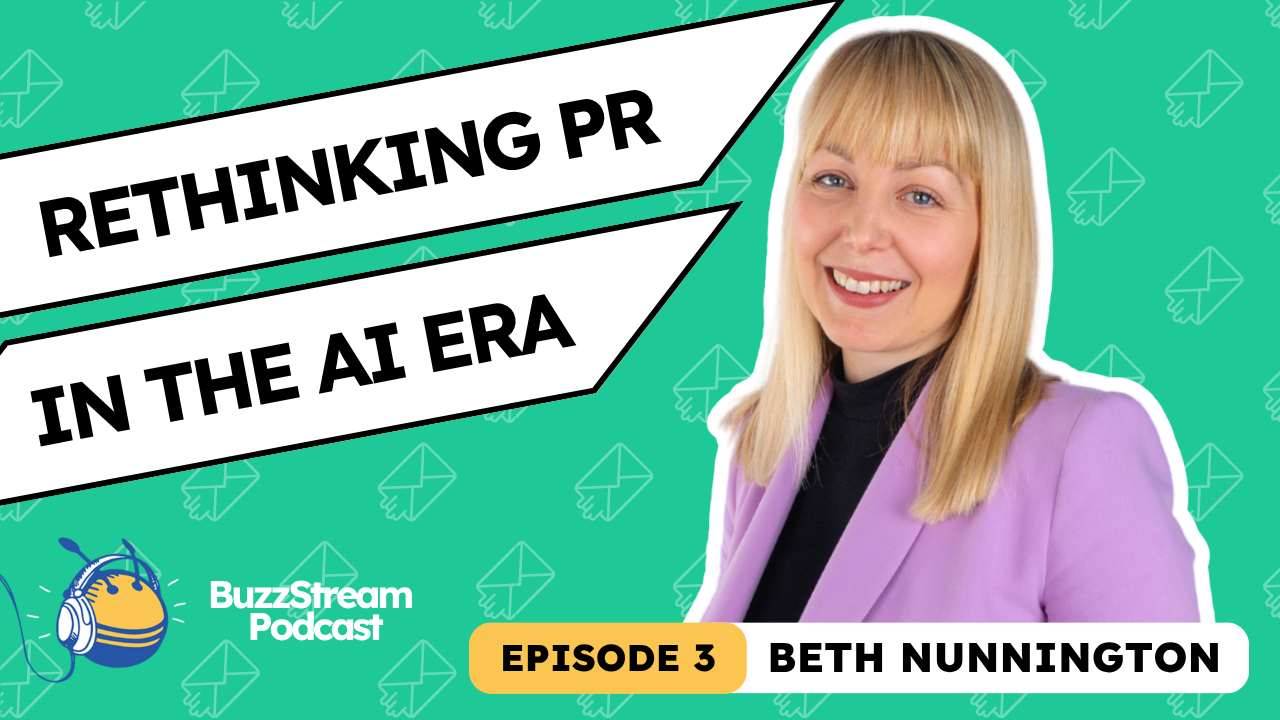Table of Contents
Since 2020, Preply has earned over 12,000 referring domains and driven more than 3 million organic visits. I connected with Daniele Saccardi, Preply’s Senior Team Manager of Global Digital PR & Online Reputation, to learn how they made this happen.
We dive into their in-house vs agency approach, link velocity benchmarks, international strategy, and how they’re preparing for an AI-driven search future.

- Start with relevance – language and culture were key angles that made Preply’s PR campaigns resonate with journalists.
- Find sub-niches that spark media interest rather than trying to force a brand narrative.
- Measure your link building success by comparing competitor domain velocity and plan your campaigns accordingly.
- Use the “Preply at a party” test: if your brand wouldn’t “talk about it” authoritatively in real life, don’t pitch it.
- DR 40+ was their benchmark for link “quality”, but relevancy is becoming even more important in the AI era.
- Repurpose old campaigns year over year (e.g., “Rudest Cities 2022” → “2023”) to extend campaign life and maximize ROI.
- Build campaigns with media in mind first, then optimize for SEO later through internal linking.
- Use PRs native to the country when pitching internationally.
Here is a slightly edited transcription of our talk.
Content we discussed in the talk:
- Rudest Cities in the U.S. (2025)- https://preply.com/en/blog/rudest-cities-2024/
- Business Jargon Survival Guide- https://preply.com/en/blog/b2b-business-jargon-survival-guide-for-the-office/
- How Your Myers-Briggs Type Impacts Language Learning- https://preply.com/en/blog/mbti-personality-affects-on-language-learning/
How did you ultimately choose the focus of ‘language’ for Preply’s digital PR content?
Daniele: Yeah, so the name of the game for us is really increasing our referring domain count over the last few years.
The competitors in the space are pretty large, and everyone knows Duolingo is absolutely huge.
But they’re also smaller, more agile competitors. The idea was how can we get the most referring domains over the line?
We quickly found that just talking about education and learning led to journalists being icy to us.
It’s not a sexy subject; it’s not going to be a headline on the New York Post.
So we started to find subcategories around language that we could talk about that would be interesting for journalists, and that really, we started to fly after that.
So Ruder Cities is an example of that.
We’re looking at culture. So it’s language and culture.
When you learn a language, it’s important to immerse yourself in the culture. So we use that as an angle into a whole new a whole new area that we can talk about.
And on a, on a flip side, we had a campaign called Business Buzzwords and the idea there is one of the key users of Preply.
People who are trying to advance their careers.
People learn a language to better themselves, to get a better job, whatever it might be in their professional life. So, there is another angle of people you can reach through business buzzwords.
We had a fun tongue-in-cheek approach to it, looking at which.
Are the most annoying. For example, things like I said, like getting over the line, lowest hanging fruit yeah. All that kind of stuff.
Vince: And I probably jumped ahead a little bit, but you and I were talking before this, and you mentioned that you have recently moved digital PR in-house, but before that, you were working with. Agencies? I assume?
Were you working with agencies in the past?
Daniele: Yeah, so we’ve always had a hybrid working model.
Back in 2020, it was very much SEO outreach. Then, as we moved into digital PR, we really needed the muscle from agencies, and we built that up—plenty.
And now we’re at a point where we’re pulling that back, pulling more in-house.
But we’re still using agencies, and we’re still working with some really great agencies out there that help us come up with cool campaign ideas.
There’s one thing that in-house that we can do is we can work on the ideation phase.
Do the creatives and then give it to a PR agency, a traditional PR agency with the specific KPI of “please get a link if you can.” That works really well in Latin America, Turkey, and Japan, where there are no digital PR agencies.
It’s usually it’s quite, anglocentric, especially UK/US.
So yeah, these these hybrid models of ways of working where it’s just the end goal is how do we get as many powerful links as possible.
Vince: So, going back to something you said, I think this is something that a lot of organizations run into is just this idea of so you said you started doing SEO outreach, and you do have a lot of these hybrid pieces that it seems like you’re doing, digital PR kind of type outreach, but they also rank for some keywords, and we’ll get into that.
But what made you realize that, hey, digital PR is more the route that we wanna go?
What made you decide that digital PR was the best route forward?
Daniele: We iterated a lot on our strategy because really I think the best approach to anything in marketing is to go in with question marks. You know what?
What do we need to do and not assume that you have had the answer?
We started off by looking for high-relevant links, going to universities, and doing outreach to universities, creating tools that were highly industry-specific, but we found that the link velocity wasn’t there.
And I’m not even talking about link velocity as in coming in quickly.
Over time it was just a low count with links.
Digital PR fixed that. And we saw that as we implemented more digital PR and our referring domains grew, our revenue and rankings went up.
So we correlated those things together to scale digital PR from, from a paid perspective, if you will.
Vince: Yeah. I mean that, I was gonna ask about the leading indicators of success for digital PR and it sounds like revenue and traffic. Yeah. What, so when you’re talking about building links, were you looking at velocity from some of the competitors and putting yourself up against them?
And that’s you’re realizing it’s not quick enough as compared to competitors?
Did you compare your link velocity to competitors?
Daniele: Yeah, so one of the things that. You can do is you can look at how many referring domains your competitors have, and then the velocity at which they’re building them, and then calculate how many links, domains, so you would need to build monthly in order to outpace them by 2028, for example.
And that’s how you create that that long-term strategy.
Vince: I love that. That used to be one of our big things when I worked at Siege Media. That’s how we would pitch. I think a lot of the the link-building efforts and content marketing in general were looking at that link velocity. It just makes a lot of sense.
How many campaigns were you doing per month/quarter at your peak?
Daniele: Okay. At our peak, and this sustained for maybe a year and a half, it was way over a hundred campaigns a quarter.
We’re thinking 120,130.
How they’re split between actual, let’s call them hero campaigns and reactives. It’s difficult to define. I couldn’t give you a number.
But also that’s not counting all the reactives that we did with agencies. So a lot is it, we really went for it trying to avoid the user marketing technology to explain how fast we were going with it.
But yeah we it was a we were doing a lot, I think we were about 4,000 links a quarter at one point.
Vince: Yeah. Wow.
Daniele: D 40 plus might I add!
Vince: yeah. D 40 plus. That’s awesome. Was that kind of a goal too, where you’re setting minimums for the agencies you’re working out and when you’re doing outreach?
Was DA 40 always the minimum when working with agencies?
Daniele: Yeah, that’s how we look at links in general when you’re working on such a project. I know DR 40 plus has its problems because you get plenty of good relevant sites underneath that. Of course. But when you’re working with high volume, you need to have a semi-arbitrary cutoff line.
And for us it was a good link. Is DR 40 a very good link? Is DR 70? And yeah, that’s how we would categorize them.
Vince: Yeah. And to piggyback off of that the thought that this is something that I’m working on now is analysis on link relevancy and kind of the true impact over just pure link volume.
Can you talk a little bit about that? Because, we, I think we spoke before about in this podcast, but offline we spoke as well about the pitfalls of getting too far away from your core deliverables and or, sorry, your core focus as a site can also lead to links that just aren’t relevant.
And ultimately, I. It’s like, how much work is that doing for you paying these agencies to get these links? It becomes much more important, I think, especially when you get agencies building links for you. But yeah. Can you tell me what your thoughts are on link relevancy?
What are your thoughts on link relevancy?
Daniele: I think now it’s more important than ever, earlier I nodded to the domain velocity strategy and I think from 2024.
We started to see with AI that relevancy became increasingly important.
The problem I have with it is that it’s impossible to measure, or at least I haven’t found a reliable way of measuring it yet. Yeah, so it’s a long bet.
We’re putting all this effort into ensuring relevancy so that when chatGPT, for example, finds a way of monetizing for brands, giving them information.
What I mean by that is, people start using chatGPT, chatGBT is taking information from Preply, for example, giving it to users, but Preply isn’t getting the click anymore, and Preply isn’t getting the exposure per se.
So there’s gonna have to be some way of LLMs rewarding brands like Preply like any brand that creates content for users.
That’s where we’re at.
We do think that’s gonna come, but we dunno what it looks like.
So currently the relevancy is probably the most important thing, especially if you are an established brand. If you are Nike, I don’t think that building 1500 new referred domain is gonna do much for you.
It’s more about creating powerful links that have high relevancy into your site and into specific pages and campaigns?
Vince: Yeah, we have done some studies. I know Ziff Davis did this great study that looked at early on, like Large language models were pulling from Reddit and all these kind of this mix of information that was not, reliable we’ll say.
So what they started doing is curating these data sets using high DA sites for and publication specifically.
And so taking that one step further, we were looking into kind of, now a lot of these public share are partnering, going into data partnerships and allowing these large language models, these AI technologies to leverage some of their content.
Yeah, a long-winded way to say, I think you’re definitely on point there.
I almost think it’s even more important and I’ve been talking a lot about like data even, especially proprietary data, like the more you can insert new information into these large language models and associate it with your brand, Preply says, whatever, 80% of users, whatever, some type of unique data or stat, and then get it mentioned alongside online tutoring, online language tutor Preply says, Whatever.
That just helps. It’s basically SEO again, but we’re doing it through AI.
Daniele: Yeah. And also now that you say, it just reminds me this morning we were looking at images in AI, we found that ChaGPT won’t read images on a page.
So if there’s an infographic on a page, it won’t read it.
Vince: Oh, interesting.
Daniele: But if you give it, if you give it the infographic and say, read what’s on this infographic, it can read it.
But it seems from what we’ve seen. What we’ve observed that it will purposely ignore images on a page. So what is that gonna do to the infographic?
It suddenly becomes unappealing for me to put an infographic on the digital PR page because chatGPT can’t read it.
Vince: Yeah. And then, but then it’s what about the user? There’s still gonna be that balance. We have to keep things on there. Yeah. It’s gonna be an interesting time.
So I guess that’s a good transition point into talking about. You know where you’re at now and what your kind of plans are for the future. So I know you’ve said you pulled everything in-house, right? Why did you ultimately move digital PR in-house?
Why did you ultimately move digital PR in-house?
Daniele: Yeah. No, so we’ve moved a lot of digital PR in-house and we have a lot more going on in-house.
We just kicked off again with our outreach. We’re not fully in-house. We still have great agencies that, that we’re working with.
Vince: Ah, cool.
Daniele: But there was indeed a point where we did zero outreach in-house, and I can go through the reasoning of that. I think it’s quite interesting.
It was a kind of essentially risk mitigation. ’cause outreach itself is, in my eyes, risky, right?
It takes so many hours and you’re not guaranteed anything.
So one of the things that we did was use our budget to spread it across agencies so that they did the outreach, which is why we like PR agencies because we can effectively work with a CPO to come up with a nice idea and then spread that time out amongst agencies, PR agencies that.
We’re looking at how to pivot because Preply’s gone from being a series B, 300-person startup 700 person to a 700 series C scale-up.
It’s a much bigger brand and we end, we now need to think like a bigger brand.
Looking for relevancy is more important. We’re willing to implement these ideas in-house.
Dive in more into what users are talking about and try to address that via content and try to get the stories that we want placed in the top-tier media around the world.
For example, for us, the New York Post, covering Preply because of how powerful subscription models will be a big winner.
The New York Post covering Preply because I don’t know it’s Nevada is the rudest city is Nevada City, I’m not sure where it might be, Florida is a rude City in the States it’s not irrelevant. It’s great.
We’ve got a link from the New York Post.
We’re trying to now send off very specific signals which is just to bring it back, why we’re doing it in-house.
We just want to take more time, build relationships with journalists, and create, essentially having more control over the narrative that is Preply online.
Vince: Yeah I love that for in-house teams that are working with agencies, what are some recommendations that you have having gone through it now to maintain that control, maintain that narrative, because I know, especially when you’re working with a lot of agencies, you can get tough to, if you have a small team, especially, you’re approving ideas left and right. Like you might just not have the time to dig as deeply into some of those and you’re putting your faith in some of the agencies.
Yeah. What are maybe some of the guardrails that you’ve done in the past or, learned from. Failures. I think that you probably have a lot of great insights into that at this point.
What are some tips for ensuring agencies keep your content relevant?
Daniele: Yeah. We used to use the fun one a lot more, as if Preply was at a party, what would she talk about?
So what is it that your brand, if it were a person at a party, could talk about with some level of authority, and people would listen to?
So if Preply were at a party, she could talk about languages, and Neville would go, yeah. Got it.
Yeah, it makes sense.
Could Preply talk about travel and culture? Yeah.
That, that kind of makes sense.
Could we talk about sports? Probably not unless it was specific and we could really tie it into language. People would say, “You don’t really know what you’re talking about.”
Vince: Yeah.
Daniele: So that was a kind of general idea. If you’re at a party, could you get away with being an expert about that?
Vince: I love that. That’s so good.
Daniele: I wouldn’t advocate for one strategy and say, you should definitely do this or that or the other.
If you are a small brand and your competitors have 500 referring domains, and you have 50, you probably do quite well to pursue a high-velocity strategy in the short to medium term to catch up.
If you are miles ahead of the competition, maybe you want to tone it down and really work on your brand presence. So it also depends on how large the brand is.
Vince: Yeah, that’s a great point. I feel like I’ve asked this on a podcast before, too. It’s like this idea that your customer is everyone, right?
So I think a lot of people come into some of these just marketing decisions, content marketing decisions, where it’s like, ultimately, you want your end user to engage with the content, right?
And if you’re a construction client, you’re, it’s a much easier, like one-to-one.
Okay. This is my, I’m a construction rental site, so I can play in the construction lane and my end user is gonna be interested in what I have to say.
If you’re Preply, for instance, it’s like anyone in the world could be interested in language.
So I’ve had to argue against people who say I should be able to talk about anything because I want to attract users. So, why can’t I, Preply, do a dating survey or something?
It has nothing to do with language, but I’m getting links, and maybe someone who’s interested in dating is also going to be interested in online tutoring. I don’t know.
So what would you say? Have you ever run into something like that?
Yeah. That seems like more of a C-suite thing, like where you get some directive from your CEO who wants to do some idea, and you have to tell ’em why it’s not.
Do you still need to keep content “focused” if your end audience is the general public?
Daniele: Yeah, I think so. That is a correct observation, like everyone is your customer at some point, but those customers aren’t purchasing your product at all points, right?
Everybody goes through a stage in their life where they think, oh, I want to learn Mandarin. I want to learn Russian, I want to learn Italian, whatever.
It’s important to speak to those people when they’re in that mindset, not when they’re thinking, “I want to go on holiday, I need a pair of trainers, I need to get a nursery for my daughter.”
You don’t need to be involved in those conversations. It’s important when that person is looking for relevant content.
So, to get through to it, I don’t think it makes sense for brands to talk about anything, anytime, anywhere, because their customers are everyone. But everyone, at some point, I feel like I word-salted that, but hopefully, the intent comes across.
Vince: Yeah, I’m wondering if the idea then is like getting back to the links, right?
Like, for instance, the New York Post, everybody reads the New York Post. Whereas, we’re talking about in the beginning getting links from universities. Like those seem more relevant to the types of industry or something that, or sorry, the type of customers that you’d want. But where do you draw that line for relevancy?
I mean you, you did say already that it’s tough to quantify, but Yeah. Where does that line end for you?
Where do you draw the line for what’s relevant?
Daniele: Yeah, it’s complex because .edu’s not necessarily our target audience. We don’t target university students; we target working professionals, for example.
So the .edu is more to signal that we’re a trusted authority in the education space to Google, which I know is not what you are supposed to do, but it also is what you are supposed to do.
Vince: Yeah, that was a leading question I think, because that’s where my head is at these days is too, it’s like you do need to have that mix, right?
You have to solve for Google and you have to solve for users.
And now AI is another thing, but it’s important to have that mix.
I think there are some important links to have, right?
You can’t just go out and expect to build a million PR links and succeed; you do have to have some established authority.
That gets me to my next question, too.
I mentioned this earlier, but talking about organic traffic and having an SEO presence, having actual other informational content on the site is something that I know Preply has.
Is this something that you were a part of building as well, or is it a different team?
Did the digital PR team also take part in the informational content on the site?
Daniele: Yeah, just really quickly on, on your last point, I think as well, having loads of links that aren’t related to your core product can also mess up your website.
If you are a travel site and you have loads of romance links, what does Google think is going on? So it’s great to have those domains coming in, but they have to be relevant.
To answer your question, the blog team is actually a separate team, so they facilitate us on the blog.
We’re homeless in a way.
We use the blog for most of our content, but we also create landing pages, whatever it is, just work with different teams across the company to get the content live that we need.
But yeah, all of the information or top-of-funnel, bottom-of-funnel rate optimization sits with other teams across the company.
Vince: So tell me about how those kind of crossover. That’s interesting because I mentioned this earlier, like a lot of your content. Best cities. Yeah. Best US cities for what, whatever, like a lot of that has search volume.
So is that just a bonus for some of these digital PR campaigns, or do you work with the blog or the blog team, the organic team, whatever, however it sits in the company.
Do you work in tandem with the organic/blog team?
Daniele: From what we’ve seen, DPR content itself doesn’t convert great compared to dedicated blog content that we create to rank.
Even the referral traffic that we get from viral campaigns doesn’t convert well.
It might be a good ranking factor for the blog as an entity in itself, but we don’t get direct conversions from it.
I think how we benefit the blog is we bring links in.
So if we think of the, again, the blog as an entity, we create a small, say we have about 10% of the content of the blog.
We’re building up the authority of that blog so that everything else that is converting can live, breathe and do its stuff until AI overviews eventually ate it up in the last year or so.
You get the idea that’s how it was supposed to work.
Vince: Do you coordinate with the SEO team for keyword topics? Does that play a role in the ideation? Maybe they want a specific new course or something Mandarin. So now, alright, I have to build a focus around Mandarin.
Daniele: Yeah, absolutely. DPR and SEO, we’re one and the same at Preply.
We have a phenomenal SEO team. And the way that we collaborate is we look at buckets of keywords and they will look at doing basically everything but offsite around making those keywords rank. Then by bringing the link.
Which we still are, but when that was like the mass top tier media strategy was to create the content campaign that lives on the blog, have all the links going in, and then slide that out to the money pages that they’re trying to focus on, using on page, internal linking basically.
So yeah, we work really closely.
They’ll highlight opportunities for us and say, “We can get 30 KA a month if we rank for this keyword,” and we’ll be like, Brilliant. Let’s get on it. Some, so something like that.
It’s always a hybrid process between digital PR and SEO.
Vince: Yeah. Yeah. I love that. It’s funny how I ideate. I think for BuzzStream now, what can I make that’s linkable?
like I’ll find an informational topic and then it’s like, how can I make this more linkable?
Can, how can I find fresh data?
It sounds like you do that, but also the secondary benefit is just can we just create content that’s gonna bring in links that’s gonna support this through internal linking and better SEO.
So, where I was getting with all this is, do you think it is necessary to have content on the site to benefit from digital PR?
Do you think it’s necessary to have blog content on a site to benefit from digital PR?
Daniele: That’s a tricky one. It depends. It depends. It depends what you need, right?
If you’re a site that doesn’t need a high, doesn’t need a consistent high stream of links, and you just need like a boost over six to 12 months, reactive PR is probably your way to go.
Maybe in the iGaming industry, that’s probably the way to go, is to create kind of campaigns that hook onto news events and try to get them to link in from a research center.
Vince: Right.
Daniele: But when it comes to, if you’re trying to create a, a, I think a long lasting brand with consumer trust, I really do think it’s worth having it.
It’s compounding. And is it I’m gonna get his name wrong. Eli Schwartz Product-led SEO
He talks about creating a moat, around, around your content.
And I think that’s absolutely right. If you are doing, creating strong content over time you are essentially creating a moat around your brand that becomes more and more difficult to penetrate as the time goes on.
Vince: Yeah, you said something interesting there. I just wanna make sure listeners kinda understand.
So you said, if you do need to build links at a certain velocity, and I apologize if I asked this in the beginning of the conversation as well, but are you talking about competitors?
You’re always looking at competitors when you’re looking at link velocity.
Are you always keeping an eye on competitors when looking at link velocity?
Daniele: Yeah, digital PR at the end of the day is a tool to get a job done.
So the question is, why are you building links?
So there always has to be some benchmark.
Otherwise, you’re just doing digital PR because somebody told you on a podcast it was a good thing to do.
But I think you need to really ask yourself if you are, I can imagine a small brand. That sounds like business gifts or something like that. And there are loads of smaller competitors. Some digital PR might do you really good over 12 months to get yourself on the same level as them.
Maybe you’re trying to increase your domain authority to eight or fifteen. That will serve you really well.
But again, that’s gonna be digital PR tied in with branding, so those two things go hand in hand there.
Vince: Yeah, I love that one of the things that we found on our state of digital PR survey was that I asked which team you work most closely with.
SEO was like, the majority of people work most closely with SEO, and surprisingly, brand was way, way down on the list, and that’s something I’m hoping changes in this next year.
To your point, a lot of the signals I’m seeing from Google are because click-through rate and brand affinity seem to play such a big part in not only clicks and organic search on the SERP but also now potentially in AI as well.
It just seems to be much more critical for people to work together with their brand teams.
All right. Daniele, we also discussed one question earlier: Do you ever consider stopping digital PR?
Is there ever a point where you’re gonna get to enough content where you could start repurposing things and doing outreach on the original sorry, the existing content that you have on the site, or do you always keep it going
Is there ever a point at which you stop digital PR?
Daniele: I guess it depends what you are trying to do, but when it comes to repurposing content, we always repurpose content. We’re always looking to, if we did something in 2022. Ru City 2022, we wanna repurpose that. RU City 2023. We’re always looking at repurpose, repurposing, and if that’s what you’re asking, like repositioning the same content.
Yeah. With amendments, maybe even updates. Even if the dream is, you’ve got a survey from 2023, you do it again in 2024.
And look at the differences, why have things moved? Because then you don’t just have a ranking.
You also have you have changes over, year over year.
And the more you do that, the more information you have.
Yeah, I think you should always try to be creative with what you have.
It’s not the case that you do a campaign, it does its bits and then you throw it in the bin, metaphorically speaking.
Even going back to previous campaigns that were, we call them, “made for media.”
So when we do a digital PR campaign, we’ll list it as made for media and then work with SEO to retarget it so it can live in Google and be found by journalists later. One down the line. Yeah. So it outreaches itself.
Vince: Are you changing the titles, changing the URLs? Is that the strategy there?
Daniele: So the overall idea is to find what’s, what are the core messaging, what’s the core messaging of the DPR campaign? What’s the keyword it could rank for? Where’s the gap? And then how do we convert that into an SEO, an SE for Google campaign.
Vince: Yeah, I love that. I feel like I’ve tried that in the past with some of the stuff, but it was like it wasn’t as strategic as it could be, and I think that is a very underutilized strategy.
You have the campaign, it gets a lot of links, you refocus it, and then yeah, it just becomes this kind of passive link-building machine.
That’s great. I wanted to touch a little bit on international digital PR before we close here. ’cause I know that is a big strategy or part, big part of your strategy because you have, obviously you said the largest language online database for learning languages.
So, different languages are clearly part of it for different customers in different countries. And apologies if I missed this. I think you said in the beginning that one of the reasons you partnered with agents from different agencies was that some of them might have better abilities to do outreach in different countries.
Is that right?
Can you talk about doing outreach for campaigns in different countries?
Daniele: Yeah. When it comes to digital PR agencies, there’s no doubt in my mind that the US and the UK have the best, especially when it comes to ideation and understanding the intricacies of the merge between digital PR sorry, PR and SEO going into latam. Even going into Italy and France was tricky.
Germany was tricky. I was trying to find a digital PR agency. They do now, but they didn’t exist.
So we would do a lot of the ideation in English and then try to repurpose it and outreach it to other geos around the world.
Another one is in APAC, right?
Japan doesn’t have digital PR agencies.
We used ideas that previously worked, converted them to stories that we posted in Japanese, and then used traditional PR agencies to push them.
And a sweet tip is that in Japan, if you stick a press release out, journalists actually cover your story.
Vince: Yeah, good tip there. Yeah I spoke to two people on this podcast about more international Hannah Montgomery from Shout Bravo. Now I think it’s part of Incubeta. But yeah, she did a whole talk on pitching internationally in bright at BrightonSEO last year. And yeah, one of the things she said was like data seems to play well, universally, data studies, but yeah, there’s like different levels and degrees of the kind of outreach you have to do.
We spoke to somebody else from Australia and she was talking about, it’s imminent infancy there and there’s a lot more one-on-one talk with journalists.
You go meet them for coffee, and Yeah, it is. There are a lot of intricacies.
I think that would be like the one thing I would say that I’ve learned: if you’re thinking of doing it, it’s probably not as easy as just copying and pasting something that did well in one country and doing it in another country.
Daniele: Yeah. Especially, in the UK, the papers will take a tongue-in-cheek title.
They like a bit of humor every now and then, but it doesn’t work so well.
Even in the States, we’ve seen that stories stick differently depending on how we frame them. And when you go international, it really changes.
We actually brought in a consultant from Germany at one point because we were like, how do we crack Germany?
We just can’t get any links.
This content is working everywhere, but it’s not working in Germany. And she said the journalists who work at the regional newspapers—her words—have a lot of integrity.
It’s their role to take the news internationally and make it digestible for four people from that region. And so we went, ah, okay.
So in Germany, you’ve got these journalists who are more focused on data and more serious topics that they can translate for the people in the constituency.
Vince: Yeah. And again, I mean it just kinda goes to show I love getting a consultant, someone on board, and a specific agency.
I think that was one of Hannah’s recommendations, too. It’s like just getting someone. You can even go on Upwork and ask, “Does this make sense?” Does this outreach make sense?
Alright, Daniele, I don’t want to take any more of your time. I wanted to give you a quick ability to shout out your favorite Preply piece if people haven’t seen it—Digital PR piece, I guess I should say.
What is your favorite Preply piece?
Daniele: I think I’ve got recency bias, but the Myers-Briggs piece we did is my favorite.
And what we did, we took different people with different personality types and we saw how they took to learning a new language how we did that.
You can go and re read the piece. We localized it into loads of different languages, but I think it’s a really cool piece.
Vince: Yeah, I love it. Al I will definitely check.
I haven’t seen it, so I will check it out, link to it in the show notes for sure.
And a handful of, there’s other pieces.
I feel like there’s a good opportunity for a case study, Daniele. Maybe we can get you to write one or we can go in together and tagteam a case study on the blog here too for a Buzzstream post.
But Daniele, thank you so much again.
I know you have a new child. I know you’re busy with Preply release stuff, so thanks so much for taking the time to chat.

 End-to-end outreach workflow
End-to-end outreach workflow



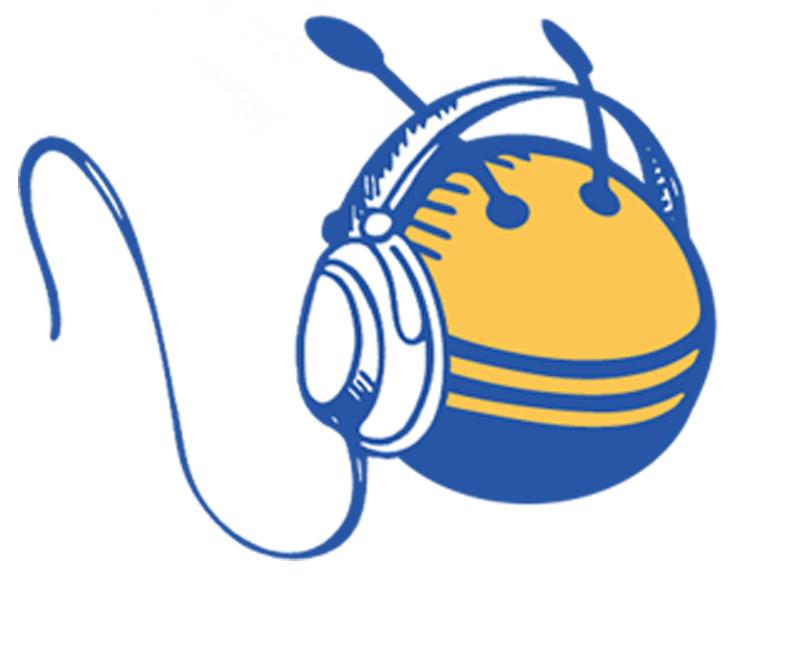 Check out the BuzzStream Podcast
Check out the BuzzStream Podcast


